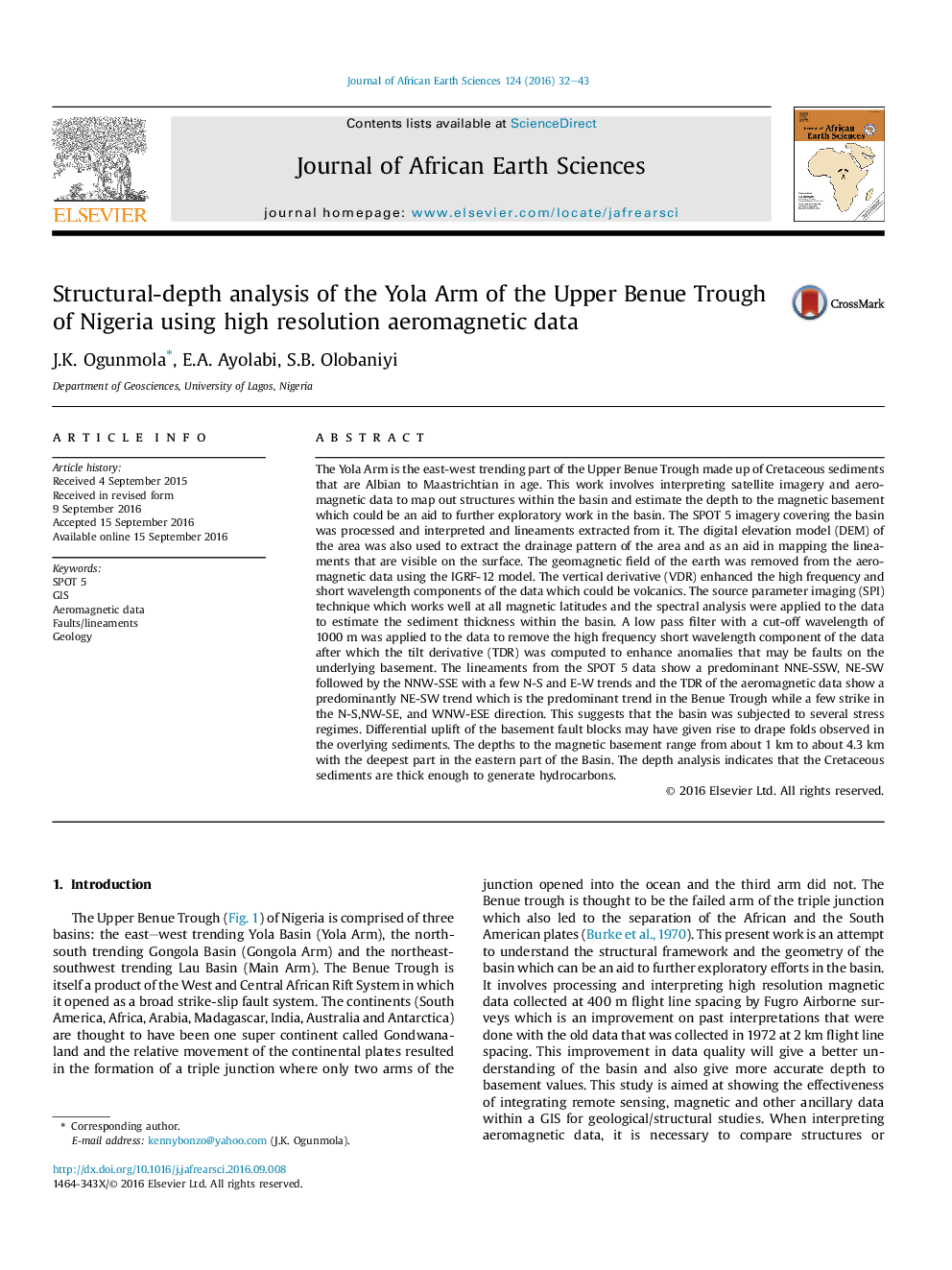| کد مقاله | کد نشریه | سال انتشار | مقاله انگلیسی | نسخه تمام متن |
|---|---|---|---|---|
| 4728129 | 1640184 | 2016 | 12 صفحه PDF | دانلود رایگان |
• The dominant trend of the basement faults are in the NE-SW with a few N-S, NW-SE, and WNW-ESE directions.
• The major structural trends within the sediments are also NNE-SSW, NE-SW followed by the NNW-SSE with a few N-S and E-W trends.
• Differential uplift of the basement fault blocks may have given rise to drape folds observed in the overlying sediments.
• Localised volcanics are present in parts of the study area especially to the west.
• The deepest part of the basin is found in the south-eastern part of the area where the Cretaceous sediments are about 4 km.
The Yola Arm is the east-west trending part of the Upper Benue Trough made up of Cretaceous sediments that are Albian to Maastrichtian in age. This work involves interpreting satellite imagery and aeromagnetic data to map out structures within the basin and estimate the depth to the magnetic basement which could be an aid to further exploratory work in the basin. The SPOT 5 imagery covering the basin was processed and interpreted and lineaments extracted from it. The digital elevation model (DEM) of the area was also used to extract the drainage pattern of the area and as an aid in mapping the lineaments that are visible on the surface. The geomagnetic field of the earth was removed from the aeromagnetic data using the IGRF-12 model. The vertical derivative (VDR) enhanced the high frequency and short wavelength components of the data which could be volcanics. The source parameter imaging (SPI) technique which works well at all magnetic latitudes and the spectral analysis were applied to the data to estimate the sediment thickness within the basin. A low pass filter with a cut-off wavelength of 1000 m was applied to the data to remove the high frequency short wavelength component of the data after which the tilt derivative (TDR) was computed to enhance anomalies that may be faults on the underlying basement. The lineaments from the SPOT 5 data show a predominant NNE-SSW, NE-SW followed by the NNW-SSE with a few N-S and E-W trends and the TDR of the aeromagnetic data show a predominantly NE-SW trend which is the predominant trend in the Benue Trough while a few strike in the N-S,NW-SE, and WNW-ESE direction. This suggests that the basin was subjected to several stress regimes. Differential uplift of the basement fault blocks may have given rise to drape folds observed in the overlying sediments. The depths to the magnetic basement range from about 1 km to about 4.3 km with the deepest part in the eastern part of the Basin. The depth analysis indicates that the Cretaceous sediments are thick enough to generate hydrocarbons.
Figure optionsDownload as PowerPoint slide
Journal: Journal of African Earth Sciences - Volume 124, December 2016, Pages 32–43
